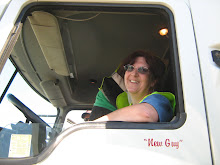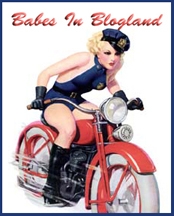 Oddly enough, once we were over the embarrassment, asking the night crew at the Challenger repair shop to find us a tow truck turned out to be a blessing in disguise. We were in the middle of nowhere (as you can see, most of Manitoba and Saskatchewan is the middle of nowhere) and it took most of the night to find a chap to call out, who then had to drive a long way to find us. That meant some lovely non-truck-moving sleep. A rare treat, which set us up with a bit more energy for the next things.
Oddly enough, once we were over the embarrassment, asking the night crew at the Challenger repair shop to find us a tow truck turned out to be a blessing in disguise. We were in the middle of nowhere (as you can see, most of Manitoba and Saskatchewan is the middle of nowhere) and it took most of the night to find a chap to call out, who then had to drive a long way to find us. That meant some lovely non-truck-moving sleep. A rare treat, which set us up with a bit more energy for the next things.
The chappie arrived eventually and spent some time gingerly pulling us out of the ever-deepening ruts of snow that we had created with our wacky attempts to get moving. Eventually we were pulled carefully onto the half of the truck stop parking lot which had been ploughed. Why would anyone plough half a truck stop?
That solved our first problem, however we still had a bit of a chains-round-axles issue to contend with. One had disentangled itself as its wheel turned during the towing, but the other, the nicely complicated and especially heavy dual chain combo, was well and truly tangled on the inside of both its allotted wheels. Clearly somebody was going to lie on their back in the snow, slither under the truck and check each section of chain, methodically, for the bit that hooked together. In the dark. Who should that somebody be? Consensus among the chaps seemed to be that that it was a job for the littlest person.
At least I now know that my new trucking parka is snow proof. When I bought it in the sales I had asked the shop assistant what the difference was between water resistant and waterproof. She wasn’t sure. “Do you think I could lay in the snow in it?” I had enquired, thinking about chaining wheels at the time. She seemed to think I could but didn’t ask why. I should go back and tell her she was right, it kept me relatively dry during what felt like forever. After finding one connecting hook, we were no nearer being freed as there was another somewhere. My arms were tired, the chains were heavy, greasy and cold and I was losing the feeling in my fingers. By dint of getting the chaps to hold the bits of chain they could reach and take some of the weight off, I finally found the recalcitrant hook and we were out of trouble.
My new fleecy-lined work gloves are no longer very new looking. They look like proper trucker’s gloves now, and oddly enough given my less-than cheery demeanour while all this was going on, having sorted out a little problemette has made me feel a bit more like a real trucker and a bit less like an imposter.
The rest of the journey to Edmonton was blissfully uneventful. We delivered our trailer full of mail and waited for the next destination. The satellite message asked us politely whether we felt like driving the mountains. We looked at each other for moral support. “Got to do it sometime, might as well be now, then it’s done and we’re old hands.” We accepted the load. It was for a little town in British Columbia called Castlegar, way off the beaten track in the middle of said mountains. There was no obvious way to get there, as it was a long way south of the main TransCanada highway route through.
We asked dispatch for some routing advice and they sent us instructions for the best roads to use, with the friendly little tip “be careful on Highway 3, it has a lot of very sharp bends”. We decided to split the mountainy sort of bits in half, Neil drove the first series of scary bends and grades, then I took over to get us into Castlegar itself. When driving the Smokies, before Christmas with Dave, I had asked about the sort of grades I’d end up driving in the Rockies. “Not much more that this” he had said, we were on a 8% downhill at the time. “The runs are longer, and the drop at the side of you gives an optical illusion that it’s steeper but if you can drive this you can do the Rockies.” It was with supreme confidence therefore, that I assured Neil we’d not be driving anything much steeper than 8%. Which was going to prove to be true for the TransCanada to the north of us, which we drove on the way home. But Castlegar is not where the main roads cut through, it’s tucked away in the middle of a bit of yer actual pukka mountain. The first grade was 10%, the next was 11%. They were short to begin with, which helped a bit but not much. Going up is ok, you just slow down a lot as the weight of the trailer drags you back down the hill, the trick is not to stop. Going down is a different kettle of fish, as the weight of the trailer pushes you down ever faster but you are not supposed to use the brakes too much as they can overheat, expand and become non-existent. Then you become a runaway truck and people tend to die.
 Before each steep downward grade is a layby, a brake check point. It is compulsory for trucks to stop here and actually check their braking system for problems before setting off again and we did. Religiously. Every time. Some places offered a little map of the hill and all its bends, just so that you could be extra apprehensive before you started. Some didn't. I'm still not quite sure which version was the most reassuring.
Before each steep downward grade is a layby, a brake check point. It is compulsory for trucks to stop here and actually check their braking system for problems before setting off again and we did. Religiously. Every time. Some places offered a little map of the hill and all its bends, just so that you could be extra apprehensive before you started. Some didn't. I'm still not quite sure which version was the most reassuring.
I don't know why, but all the brake check stops we encountered had proper, working toilets in little huts. Since 'washroom facilities' are a constant obsession for the female of the trucking species, I was happier than ever to stop and check my brakes on a frequent basis but it did set me to wondering whether they loos mightn't have been of more use generally at the bottoms of hills rather than the tops, what with them being a bit scary and all.
Whatever the errand, it’s handy to have made a stop as a hill begins, if you are just getting moving again you can pick a nice low gear to stick with for some noisy engine braking to hold the beastie back. There is also a handy gadget known colloquially as a Jake brake, which uses engine compression to slow things down. A great invention but it’s only safe to use on dry roads, so a hint of slush or ice and it’s out of the repertoire of things to use. Mountains in winter tend to be slushy, so a wistful look in the direction of the friendly Jake knob on the dash was about as helpful as it got this time around.
Last in the list of ways to avoid a massacre is the utterly terrifying looking runaway lane. They are marked on the maps too, just so you know where to brace yourself for impact if your brakes do fail. Runaway lanes are for runaway trucks. They take you back up the mountain again, horribly steeply, and often contain massive humps and bumps to stop you rolling back onto the road again once the incline has slowed and stopped you. They look very hard to come out of alive.
 We’d both been taught well though, using gears and the right kind of braking techniques to keep the speed from ever building up in the first place, we managed ok. It was stressful and tiring, and the final 17 km stretch of 10% grade, all on one huge bend, down into Castlegar itself nearly killed me with frustration and the sort of backoftheneck pain you get with total concentration, but we did it. And we now know that Castlegar is the second highest town in North America. Here it is. Well, the only bit of it you can photograph from the only parking lot big enough to get a truck into.
We’d both been taught well though, using gears and the right kind of braking techniques to keep the speed from ever building up in the first place, we managed ok. It was stressful and tiring, and the final 17 km stretch of 10% grade, all on one huge bend, down into Castlegar itself nearly killed me with frustration and the sort of backoftheneck pain you get with total concentration, but we did it. And we now know that Castlegar is the second highest town in North America. Here it is. Well, the only bit of it you can photograph from the only parking lot big enough to get a truck into.






No comments:
Post a Comment